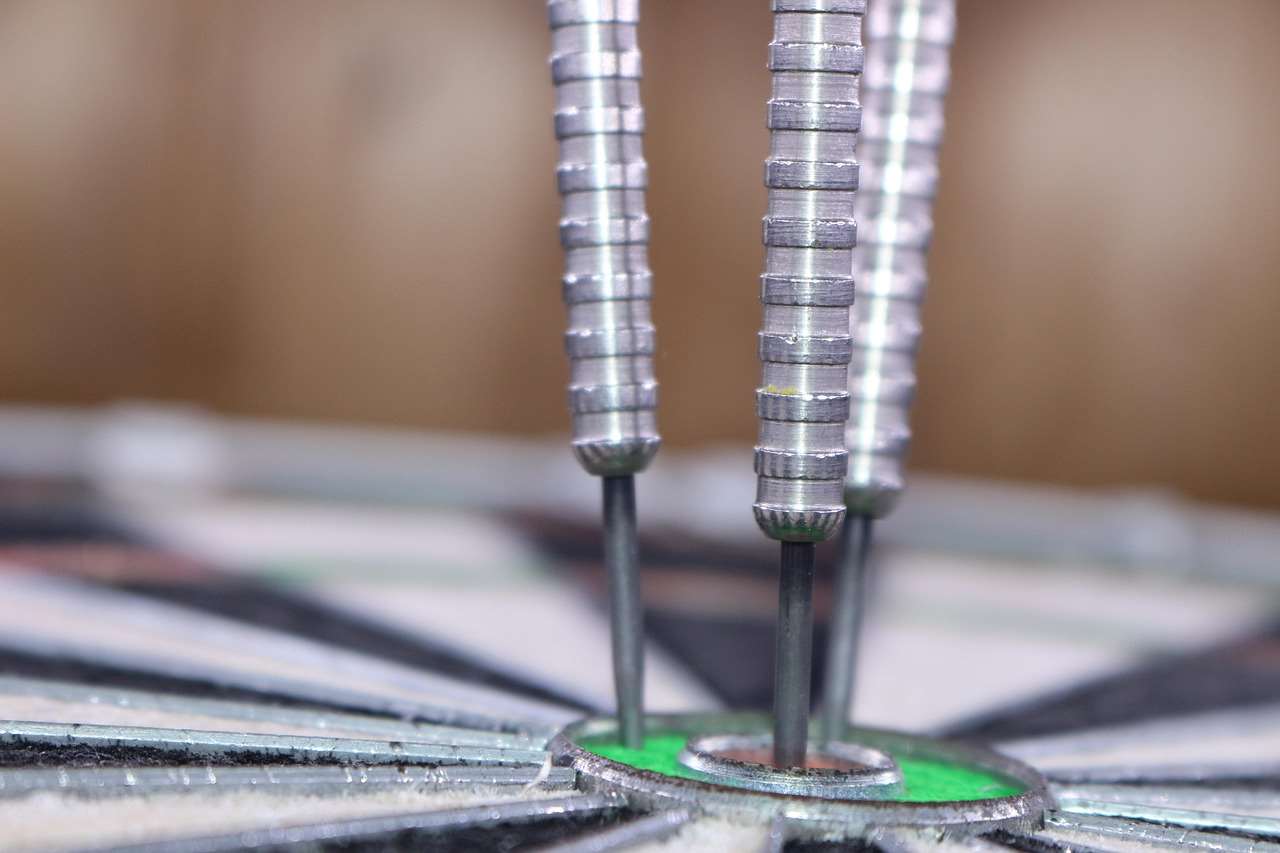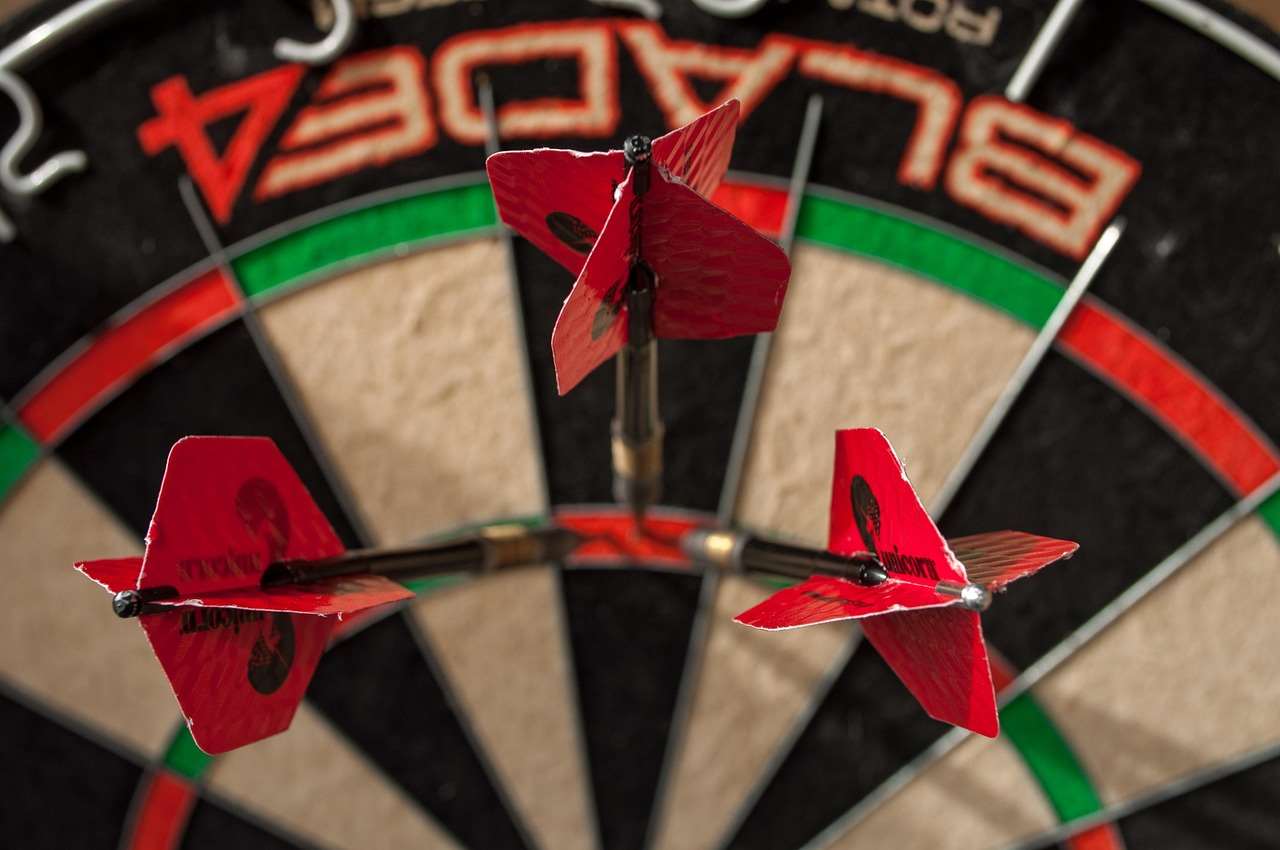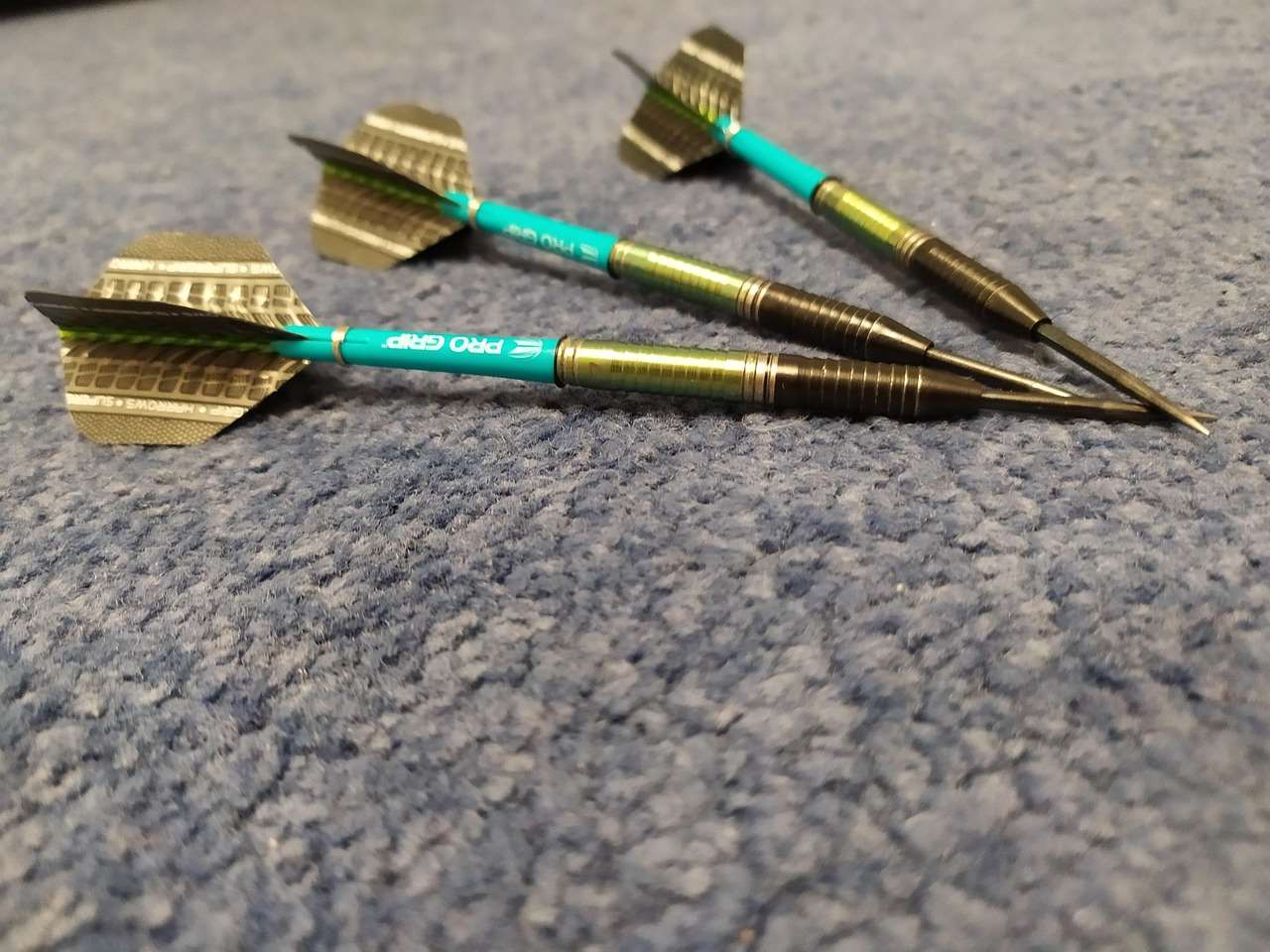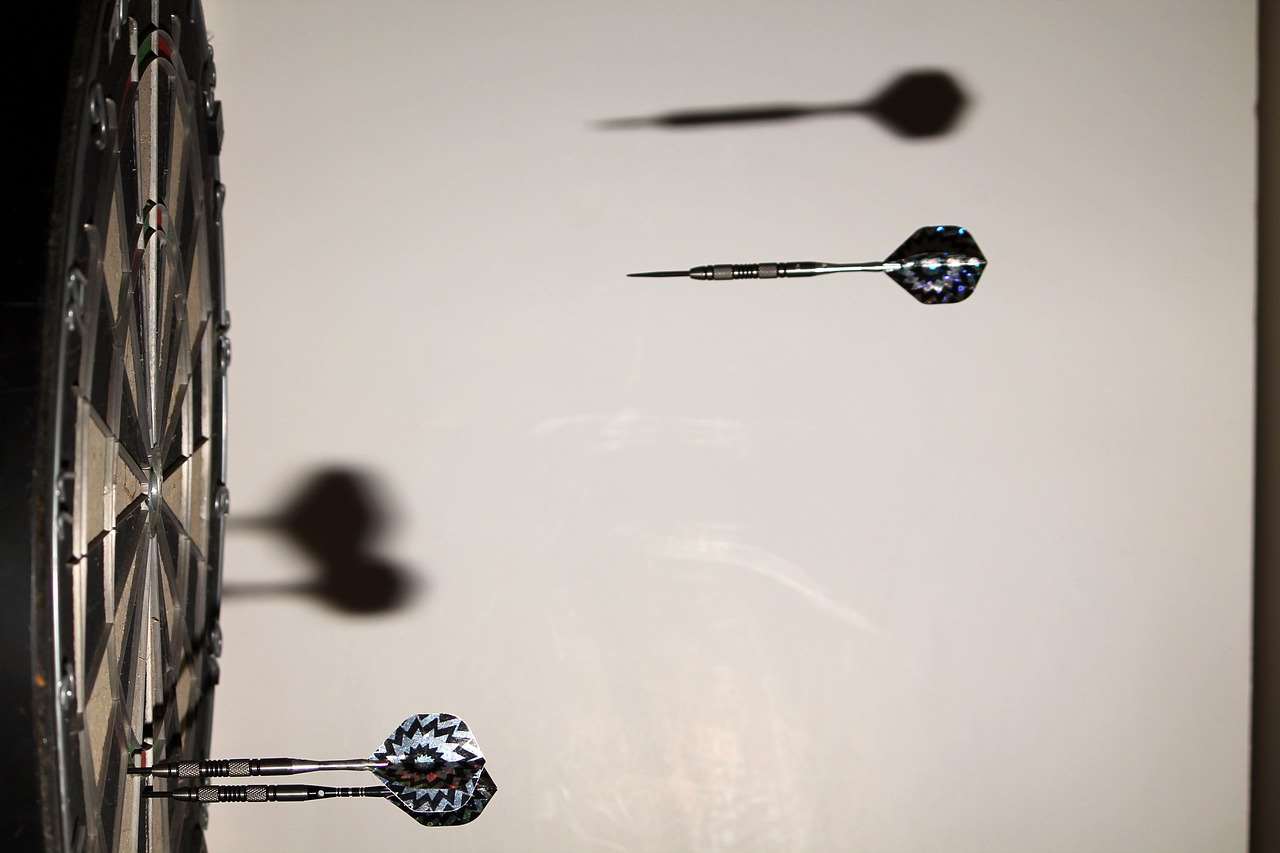Choosing the right dart weight is crucial for consistent throws and improved accuracy; generally, lighter darts are preferred for beginners, while experienced players often gravitate towards heavier options for better control. This article provides **Dart Weight FAQs Answered**, offering insights into dart weight selection, its impact on gameplay, and addressing common misconceptions, helping you fine-tune your dart setup. We’ll also cover the materials used, balance considerations, and how to experiment to find your ideal weight.
⚠️ Still Using Pen & Paper (or a Chalkboard)?! ⚠️
Step into the future! The Dart Counter App handles all the scoring, suggests checkouts, and tracks your stats automatically. It's easier than you think!
Try the Smart Dart Counter App FREE!Ready for an upgrade? Click above!
Dart Weight FAQs Answered: Understanding the Basics
One of the most frequently asked questions revolves around the ‘best’ dart weight. There isn’t a universal answer, as the ideal weight is highly subjective and depends on individual throwing style and preferences. However, understanding the principles behind dart weight and its impact on your game is essential. We can start by considering some popular weight ranges. Most darts fall between 20 and 26 grams, a range widely considered suitable for both beginners and experienced players. This offers a good balance between control and stability in flight.
Lighter darts (20-24 grams) tend to be easier to throw for beginners as they require less force. They can also be advantageous for players who prefer a faster, more flick-like throwing motion. Heavier darts (24-26 grams), on the other hand, offer more stability in flight, making them less susceptible to wobbles or deviations caused by slight imperfections in your technique. Many professional players favor this weight range, although individual preferences vary considerably.

It’s also worth noting that the perceived weight of a dart can be influenced by its shape and balance. A dart with the weight concentrated towards the front will feel heavier than a dart with the weight evenly distributed. Therefore, it’s important to consider not just the overall weight, but also how that weight is distributed along the barrel.
What are the Common Dart Weights Available?
- Light Darts (16-20 grams): Suitable for beginners or players with a very soft throw.
- Medium Darts (21-24 grams): A versatile range for most players, offering a balance of control and power.
- Heavy Darts (25-30 grams): Preferred by experienced players for stability and a more controlled throw.
- Extra Heavy Darts (30+ grams): Less common, but sometimes used by players with specific preferences.
Ultimately, the best way to determine the right weight for you is to experiment with different options and see which feels most comfortable and allows you to achieve the most consistent results. Don’t be afraid to try out various weights until you find the perfect fit. Also, consider reviewing the Choose Best Dart Equipment for further info.
The Impact of Dart Weight on Throwing Technique
The weight of your dart significantly influences your throwing technique. Lighter darts generally require a smoother, more controlled release, as they are more sensitive to slight variations in your throw. You might find that you need to focus on a consistent follow-through to avoid sending the dart off course. Conversely, heavier darts are more forgiving and can absorb minor imperfections in your technique. They tend to fly straighter and are less likely to be affected by wind or other external factors.
Players who use a more forceful throwing motion may find that heavier darts provide better control and accuracy. The added weight helps to stabilize the dart and prevent it from wobbling or veering off course. However, it’s important to note that using darts that are too heavy can lead to fatigue and potentially injure your arm or shoulder over time. Therefore, it’s crucial to find a weight that you can comfortably throw for extended periods.
How Does Dart Weight Affect Accuracy?
- Lighter Darts: Can be more accurate for players with a delicate touch, but require precise technique.
- Heavier Darts: Offer stability and reduce the impact of minor throwing errors, improving accuracy for some players.
The key is to find a dart weight that complements your natural throwing style and allows you to consistently hit your target. This may require some experimentation and practice, but the effort will be well worth it in the long run. A good strategy is to try various weights and observe how they affect your grouping (how closely your darts land together). Smaller, tighter groupings generally indicate better accuracy.

Dart Materials and Weight Distribution
The material used in the dart barrel and its weight distribution play a crucial role in the overall feel and performance of the dart. The most common materials are tungsten and brass. Tungsten is denser than brass, meaning that a tungsten dart can be thinner than a brass dart of the same weight. This allows for tighter groupings on the dartboard, as the thinner barrel takes up less space.
Brass darts are typically less expensive than tungsten darts, making them a good option for beginners. However, they are also bulkier and less durable. Tungsten darts, on the other hand, are more resistant to wear and tear and offer a more streamlined profile. They are a worthwhile investment for serious players who are looking to improve their game.
Weight distribution also has a significant impact on the feel of the dart. Front-weighted darts tend to fly straighter and are preferred by players who like to use a more forceful throwing motion. Center-weighted darts offer a balance of stability and control, while rear-weighted darts are favored by players who prefer a more delicate touch.
Understanding Dart Balance
- Front-Weighted: Stable flight, suitable for powerful throws.
- Center-Weighted: Balanced feel, versatile for various throwing styles.
- Rear-Weighted: More control, ideal for players with a smooth release.
The shape of the dart barrel also affects its grip and feel. Some darts have smooth barrels, while others have knurled or grooved barrels. The type of grip you prefer is a matter of personal preference. Some players prefer a more aggressive grip, while others prefer a smoother, more subtle grip. Experiment with different barrel shapes and grips to find what works best for you.
Experimenting with Different Dart Weights
The best way to find the right dart weight for you is to experiment with different options. Start by trying a range of weights within the 20-26 gram range, as this is generally considered a good starting point for most players. Throw each set of darts for at least an hour or two to get a feel for how they fly and how they affect your accuracy. Pay attention to how the darts feel in your hand and how much effort is required to throw them consistently.

Consider purchasing a dart set that includes multiple barrel options. This will allow you to quickly and easily switch between different weights and barrel shapes without having to buy multiple complete sets of darts. Another option is to visit a local darts shop and try out different darts before you buy them. Many shops have dartboards where you can test out different options.
Don’t be afraid to experiment with different flight and shaft combinations as well. The type of flights and shafts you use can also affect the flight characteristics of your darts. Shorter shafts tend to make the darts fly straighter, while longer shafts provide more stability. Smaller flights are generally used with lighter darts, while larger flights are used with heavier darts. Learn more about Optimal Dartboard Lighting Solutions Guide.
Tips for Experimenting:
- Start with a range: Begin with darts between 20-26 grams.
- Track your results: Keep a record of your scores and groupings with each weight.
- Consider flights and shafts: Experiment with different flight and shaft combinations.
- Don’t rush: Give yourself enough time to adjust to each new weight.
Advanced Considerations: Dart Weight and Strategy
As you become more experienced, you may want to consider how dart weight can be used strategically. For example, some players prefer to use heavier darts for scoring and lighter darts for doubles. The heavier darts provide more stability and accuracy for hitting the larger scoring areas, while the lighter darts allow for more finesse when aiming for the smaller doubles and trebles.
Another strategic consideration is the impact of dart weight on your opponents. If you know that your opponent struggles to throw heavier darts, you might choose to use heavier darts yourself to try to disrupt their rhythm. Conversely, if your opponent is using lighter darts, you might choose to use heavier darts to gain a stability advantage.

It’s also vital to consider the wear and tear on your dartboard. Consistently throwing heavier darts can cause more wear and tear on the dartboard than throwing lighter darts. This is something to keep in mind if you are using an expensive or high-quality dartboard. Regular rotation of the dartboard can help to distribute the wear more evenly.
Dart Weight and Competitive Play
- Scoring: Heavier darts can improve accuracy for scoring segments.
- Doubles/Trebles: Lighter darts can offer more control for precision shots.
- Opponent Strategy: Consider how your dart weight might affect your opponent’s game.
Addressing Common Misconceptions about Dart Weight
There are several common misconceptions about dart weight that can lead players astray. One of the biggest misconceptions is that heavier darts are always better. This is simply not true. While heavier darts can provide more stability, they also require more force to throw and can lead to fatigue if you are not used to them. Another misconception is that lighter darts are only for beginners. While lighter darts can be easier to throw for beginners, they can also be a good choice for experienced players who prefer a more delicate touch.
It’s also important to understand that there is no magic dart weight that will instantly transform you into a world-class player. The right dart weight is simply one piece of the puzzle. You also need to have a good throwing technique, consistent practice, and a strong mental game.
Don’t get caught up in trying to copy the dart weight of your favorite professional player. What works for them may not work for you. The best way to find the right dart weight for you is to experiment and find what feels most comfortable and allows you to achieve the most consistent results. You should also check out the Types Optimal Dartboard Lighting.

Busting Dart Weight Myths:
- Myth: Heavier darts are always better.
- Myth: Lighter darts are only for beginners.
- Myth: Copying a pro’s dart weight will improve your game.
Conclusion: Finding Your Ideal Dart Weight
In conclusion, determining the ideal dart weight involves understanding the interplay between weight, material, throwing style, and personal preference. As highlighted throughout these **Dart Weight FAQs Answered**, there is no single “best” weight; instead, it’s about finding what works best for *you*. Experimentation is key. Try different weights, barrel shapes, and flight/shaft combinations until you discover the setup that allows you to throw consistently and accurately. Don’t be afraid to deviate from the norm or challenge conventional wisdom. Remember to consider factors beyond just weight, such as balance and grip. Ultimately, the perfect dart weight is the one that feels right in your hand and helps you achieve your best performance on the oche. Now that you’ve learned more about dart weights, why not take the next step and explore our range of dart accessories? Choose Best Dart Equipment today!
Hi, I’m Dieter, and I created Dartcounter (Dartcounterapp.com). My motivation wasn’t being a darts expert – quite the opposite! When I first started playing, I loved the game but found keeping accurate scores and tracking stats difficult and distracting.
I figured I couldn’t be the only one struggling with this. So, I decided to build a solution: an easy-to-use application that everyone, no matter their experience level, could use to manage scoring effortlessly.
My goal for Dartcounter was simple: let the app handle the numbers – the scoring, the averages, the stats, even checkout suggestions – so players could focus purely on their throw and enjoying the game. It began as a way to solve my own beginner’s problem, and I’m thrilled it has grown into a helpful tool for the wider darts community.